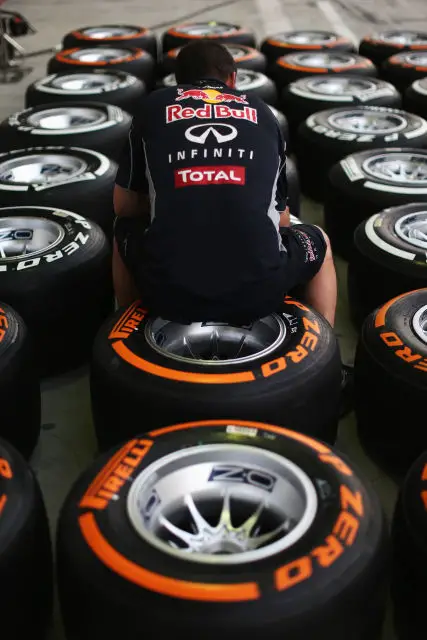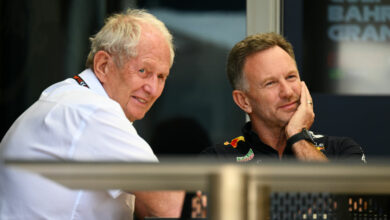Martin Brundle Advocates for Simplified F1 Tyre Rules: A Call for Consistency
In his recent Sky Sports column, Martin Brundle, the experienced commentator and former F1 driver, expressed his concern over the complex and varying tyre formats in Formula One qualifying sessions. Brundle’s call for a standardized set of rules highlights the growing complexity that confuses fans and participants alike.
Key Takeaways:
- Complex Qualifying Formats: The Alternative Tyre Allocation (ATA) trial at Monza led to a reduction in the number of tyre sets and mandated the use of specific tyre compounds for each qualifying session, making it challenging for teams and confusing for fans.
- Brundle’s Perspective: Martin Brundle emphasized the difficulties faced by teams in adapting to changing rules, particularly those not advancing beyond early qualifying stages. He noted this leads to fewer practice laps and complicates strategies.
- A Plea for Consistency: Brundle’s primary concern is the constant change in rules, which makes it hard to remember tyre combinations. He advocates for permanent, simpler rules to benefit everyone involved, including fans who he feels are overwhelmed by the current complexity.

In the fast-paced world of Formula One, changes and adaptations are constant. However, Martin Brundle’s recent remarks in his Sky Sports column shed light on an issue that’s been bubbling under the surface for some time: the complexity and variability of tyre rules in qualifying sessions. Brundle, a veteran of the sport, both as a former driver and a commentator, has seen many iterations of rules and regulations. His experience lends weight to his words when he talks about the need for consistency.
During the recent qualifying session in Monza, the number of tyre sets available to teams was reduced from the usual 13 to 11, and teams were required to use different tyre compounds for each qualifying stage. This shift, while adding a tactical layer, also brought complexity and confusion. It’s not just the teams that struggle with these changes; the fans, too, find it hard to keep up.
Brundle highlighted the plight of the teams that don’t make it past the initial qualifying rounds. These teams have to adopt a completely different approach, considering the tyre allocation constraints. The frequent changes in the rules not only affect their strategies but also reduce the number of practice laps, which is vital for performance improvement.
The crux of Brundle’s argument lies not in the specifics of the tyre rules but in the ever-changing nature of these regulations. His call for a decision to be made and stuck to resonates with many in the paddock who find themselves constantly revisiting the rulebook. The need for a simpler, more permanent set of rules is evident, and Brundle’s voice adds significant weight to this growing chorus.
As Brundle puts it, “We simply have too many tyre combinations for the various qualifying and race formats and many of us in the paddock struggle to remember them without reading up each time.” His concern extends beyond the paddock, to the fans who, in his view, “really can’t be bothered with it all either.”
The question now is how Formula One’s rule-makers will respond to this call for simplification. Will they adhere to Brundle’s plea for consistency, or will the sport continue to evolve in its complexity? The answer to this will significantly impact how teams strategize and how fans engage with the sport. The hope is for a resolution that simplifies without sacrificing the strategic depth that Formula One is known for.




